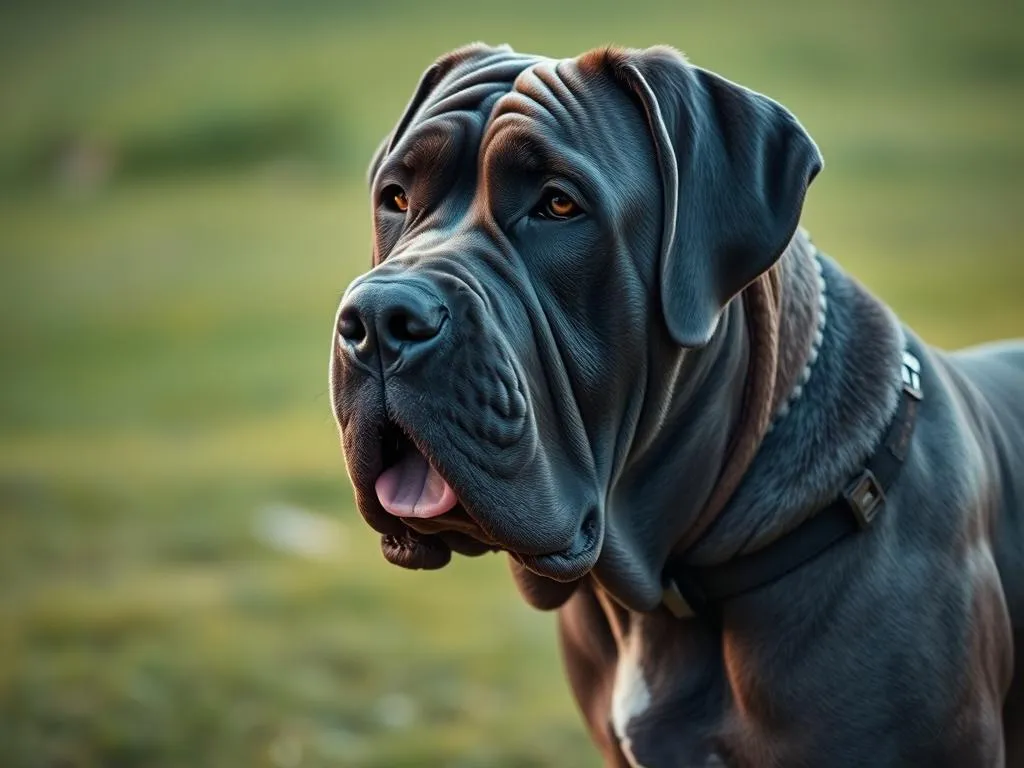
Introduction
When it comes to dog breeds, each one carries its own unique history, personality, and charm. Among these, the Neapolitan Mastiff stands out as a breed with a rich heritage and remarkable physical presence. Understanding the characteristics of this breed is essential for potential owners who are considering welcoming one into their families. In this article, we will explore the history, physical traits, temperament, care requirements, health concerns, and training methods pertinent to the Neapolitan Mastiff.
History of the Neapolitan Mastiff
Origins of the breed
The Neapolitan Mastiff boasts an illustrious lineage that can be traced back to ancient times, specifically to the Roman Empire. This breed has its roots in the Molossus, a large and powerful dog known for its strength and loyalty. Historical accounts suggest that these dogs were used as war dogs and guardians of livestock, showcasing their protective nature even in ancient societies.
Development through the centuries
As the centuries passed, the Neapolitan Mastiff transitioned from a fierce guardian to a beloved family companion. Their impressive stature and gentle temperament made them suitable for various roles within the household. Over time, these dogs were bred for their distinctive physical traits, leading to the unique appearance we recognize today.
Recognition by kennel clubs
The Neapolitan Mastiff gained formal recognition by various kennel clubs throughout the 20th century, marking its transition into the show dog arena. The American Kennel Club (AKC) recognized this breed in 2004, and since then, the Neapolitan Mastiff has made a significant impact in dog shows and competitions, celebrating its heritage and showcasing its impressive characteristics.
Physical Characteristics
Size and Weight
The Neapolitan Mastiff is a giant breed, typically standing between 24 to 31 inches at the shoulder. Males tend to be larger, weighing between 150 to 200 pounds, while females usually weigh between 110 to 150 pounds. This range in size highlights the breed’s robust and powerful build, which is one of its defining characteristics.
Coat and Color
The coat of the Neapolitan Mastiff is short, dense, and smooth, contributing to its imposing appearance. Common color variations include gray, brindle, and mahogany, each exhibiting a unique beauty. Their coat requires minimal grooming, but regular brushing can help manage shedding and keep the coat healthy.
Distinctive Features
One of the most notable features of the Neapolitan Mastiff is its loose, wrinkled skin, which adds to its unique charm. The breed’s deep-set eyes and large, square head further enhance its distinctive look. Compared to similar breeds, such as the Bullmastiff, the Neapolitan Mastiff has a more pronounced wrinkling, giving it a more ancient and wise appearance.
Temperament and Behavior
General personality traits
The Neapolitan Mastiff is known for its protective, loyal, and affectionate nature. These dogs are deeply devoted to their families and can be wary of strangers, making them excellent watchdogs. Their calm demeanor and gentle temperament often surprise those unfamiliar with the breed, as they are known to be gentle giants, especially with children.
Socialization needs
Early socialization is crucial for the Neapolitan Mastiff to develop into a well-adjusted adult. Exposure to various environments, people, and other animals helps mitigate any potential behavioral issues. Engaging in puppy classes or socialization groups is highly recommended to foster positive interactions.
Interaction with children and other pets
The Neapolitan Mastiff is generally good with children and can be quite protective of them. However, due to their large size, supervision is necessary to ensure safety during playtime. When introducing a Neapolitan Mastiff to other pets, gradual introductions and positive reinforcement can help facilitate harmonious relationships.
Care and Maintenance
Daily exercise requirements
Despite their large size, Neapolitan Mastiffs do not require excessive exercise. A daily walk and playtime in a secure yard are usually sufficient to keep them physically fit. However, mental stimulation is equally important, so engaging in puzzle toys or training exercises can help keep their minds sharp.
Grooming needs
Grooming a Neapolitan Mastiff is relatively straightforward due to their short coat. Regular brushing, at least once a week, will help manage shedding and maintain skin health. Bathing should be done as needed, typically every few months, to keep their coat clean and fresh. Special attention should be given to their facial wrinkles, as moisture can accumulate and cause skin irritations.
Nutrition
A well-balanced diet is essential for the health of a Neapolitan Mastiff. High-quality dog food formulated for large breeds is recommended to support their growth and maintenance. Portion sizes should be adjusted based on age, weight, and activity level, and it’s advisable to consult with a veterinarian for specific dietary recommendations.
Health Issues
Common health concerns specific to the breed
Like many large breeds, the Neapolitan Mastiff is prone to certain health issues. Common concerns include hip dysplasia, heart conditions, and skin problems. Regular veterinary check-ups and a keen eye for any changes in behavior or physical condition can help catch potential issues early.
Regular health check-ups and preventive care
Routine veterinary visits are essential for maintaining the health of a Neapolitan Mastiff. Vaccinations, parasite prevention, and dental care should be part of their regular health regimen. Keeping up with preventive care can significantly enhance their quality of life.
Lifespan and aging considerations
The average lifespan of a Neapolitan Mastiff is typically between 7 to 10 years. As they age, owners should be attentive to signs of discomfort or changes in behavior, as these can indicate common age-related issues. Adjusting their care routine to accommodate their needs as they mature is crucial for their ongoing health and happiness.
Training and Behavior Management
Basic training techniques
Training a Neapolitan Mastiff should begin early, as they can be stubborn. Positive reinforcement methods, such as treats and praise, are effective in encouraging desired behaviors. Consistency and patience during training sessions will yield the best results.
Addressing behavioral issues
Common behavioral issues for the Neapolitan Mastiff may include stubbornness or a tendency to be overly protective. Addressing these behaviors with gentle correction and redirection can help. Engaging the help of a professional trainer can also be beneficial for more challenging issues.
Advanced training opportunities
For those interested in further honing their Neapolitan Mastiff’s skills, advanced training options such as agility or protection training are available. These activities not only provide physical exercise but also mental stimulation, which is vital for this intelligent breed.
Conclusion
In summary, the Neapolitan Mastiff is a remarkable breed that offers a blend of loyalty, protection, and affection. Understanding their unique traits and care needs is crucial for potential owners considering adding one to their family. With proper training, socialization, and care, a Neapolitan Mastiff can be a loving and devoted companion. Responsible ownership and awareness of their specific needs will ensure a fulfilling relationship between the dog and its family.
FAQs
What is the average cost of a Neapolitan Mastiff?
The average cost of a Neapolitan Mastiff can range from $1,500 to $3,000, depending on the breeder and lineage.
How much exercise does a Neapolitan Mastiff need?
Typically, a Neapolitan Mastiff requires about 30 to 60 minutes of exercise daily, which can include walks and playtime.
Are Neapolitan Mastiffs good with children?
Yes, Neapolitan Mastiffs are generally good with children, but supervision is necessary due to their size and strength.
What is the best way to train a Neapolitan Mastiff?
Utilizing positive reinforcement techniques, such as treats and praise, is the most effective way to train a Neapolitan Mastiff.
How do I choose a reputable breeder for a Neapolitan Mastiff?
Look for breeders with a good reputation, health testing for their breeding dogs, and a commitment to the breed standard. Visiting the breeder and meeting the puppies’ parents can also provide insight into the quality of the breeding program.









